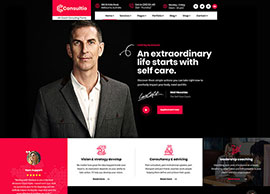Microsoft co-founder Bill Gates called AI “revolutionary” in a recent blog post. “The development of AI is as fundamental as the creation of the microprocessor, the personal computer, the Internet, and the mobile phone,” he wrote. “It will change the way people work, learn, travel, get health care, and communicate with each other. Entire industries will reorient around it. Businesses will distinguish themselves by how well they use it.”
Some companies are already getting started: Morgan Stanley, PwC and Stripe are testing AI chatbots to make work processes more efficient. Meanwhile, employees are using ChatGPT with or without their boss’s knowledge.
And according to a recent Resume Builder study, “9 in 10 business leaders say it’s beneficial for job applicants to have ChatGPT experience.”
Whether you’ve resisted using ChatGPT or have already eagerly experimented with it in your HR role, here’s an in-depth look at how it can expedite repetitive tasks—and what risks you may run if you rely on it too heavily.
What Is ChatGPT?
ChatGPT is an AI chatbot built from large language models (LLMs). These models “are a type of artificial intelligence (AI) system that’s been trained on large amounts of text data. They can understand natural language and produce human-like responses to inputs,” Anthony Lancaster, chief robotics officer at Professional Robots, explained in a Forbes article.
Since late November, ChatGPT has dominated headlines, but it’s not the only AI chatbot using LLMs. ChatGPT alternatives include Jasper and YouChat, as well as Google’s Bard, which launched in mid-March.
“I think everyone is astounded the first time they see ChatGPT because what it writes feels very human, but in some ways, the technology is actually quite simple,” said Howard Ting, CEO of Cyberhaven, a data security firm based in Palo Alto, Calif. “It predicts which word will come next in a sentence based on the word order it saw across its training data, about 300 billion words worth of content from books, the Web and the interactions it has with people in its chat window.”
Signing up for ChatGPT is simple and only requires an e-mail address. Basic access is free, and users can sign up for “ChatGPT Plus” to access updated versions.
ChatGPT’s HR Capabilities
Writing job descriptions is one of the most-discussed uses for ChatGPT in HR. For example, LinkedIn plans to launch a feature supporting AI-written job posts. However, the range of uses is rapidly growing. Google revealed it is incorporating an AI chatbot into Gmail and Docs, and Microsoft is providing technology similar to ChatGPT for Microsoft 365 subscribers.
Here are examples of HR tasks ChatGPT can potentially perform:
- Crafting job descriptions.
- Composing employee handbook materials and policy manuals and updating them.
- Drafting e-mails to job candidates, including offer letters.
- Checking HR laws and regulations.
- Summarizing research and reports.
- Generating employee surveys and sentiment analyses.
- Streamlining administrative tasks, such as reminders about events and holidays.
- Developing personalized career development plans.
- Preparing performance reviews.
- Scanning and screening resumes.
- Compiling interview questions.
- Conducting market research on compensation.
- Providing employee self-service.
ChatGPT’s output can be surprisingly detailed, but there are limitations that must be acknowledged and accounted for. First, ChatGPT is trained on information available before 2021. Second, there have been multiple reports of erroneous responses. Third, source citations are not automatically provided.
In one example, when asked to find statistics for the number of employees struggling with mental health, ChatGPT gave five data points from what appear to be reputable organizations. However, there are no direct links to the sources of the information provided.
The second screenshot shows that ChatGPT can be prompted to identify sources.
But don’t take the response at face value. In this example, the link to the second source went to the WHO website, but the specific page returned a 404 error. Sources four and five also generated Internal Error messages.
Still, ChatGPT can create a solid first draft that provides an easier starting point than a blank screen. Even the Writers Guild of America is considering allowing its use in screenwriting. But it’s still essential to review information from ChatGPT for accuracy before copying, pasting and sharing the results.
Is ‘Prompt Engineering’ Really a Big Deal?
ChatGPT might feel magical, but it takes effort and experimentation, known as “prompt engineering,” to formulate questions that will yield the desired response. Multiple organizations are recognizing this as a valuable skill. as evidenced in job postings for “ChatGPT Specialists” and “Prompt Engineers.”
For example, Boston Children’s Hospital posted an AI Prompt Engineer job listing earlier this year. Among the job responsibilities: designing AI prompts, testing and evaluating the performance of AI prompts, and troubleshooting technical issues related to AI prompts. Upwork, a freelance jobs platform, listed an AI Prompt Engineer position for an unnamed client paying up to $40 per hour.
However, these may simply be trendy positions, according to a tweet by Wharton School associate professor Ethan Mollick, who predicted that ” ‘prompt engineering’ is not going to be a big deal in the long-term & prompt engineer is not the job of the future.”
The reason? AI gets easier to use and creates more precise results over time as each new version is released and more people use it.
That’s not to say there isn’t some skill and experience needed to use the tech. The better a prompt is, the greater the likelihood for getting more specific outputs in a tone tailored to the intended audience. With any prompt, once you receive an output to a question, you should enter a follow-up prompt to get more elaborate information.
Future of Work
Example Prompts and Queries
Here are a few sample prompts you can try in ChatGPT, along with follow-up queries:
Job Description: Write a job description for an HR business partner manager position. The job description should include a list of responsibilities, a list of needed qualifications, and compensation and benefits.
After receiving the job description response, prompt further.
Social media: Write a social media post summarizing the job description for Facebook. Make it interesting and targeted to midcareer-level HR professionals.
Interview Questions: Create a list of interview questions. The hiring manager is interviewing candidates for an HR generalist position that requires five years of experience in the (INSERT INDUSTRY).
Interview preparation: Act as a job candidate on an interview. I am the interviewer and will ask you questions related to the HR generalist position. You reply as the candidate. Answer only one question at a time. (Ask ChatGPT some of the questions provided in the previous prompt.)
Compensation data: What is the salary range for HR generalists with five years of experience in the Washington, D.C., metro area?
Discipline Memo: Write a memo to an employee to address tardiness. The employee is a midlevel manager with multiple direct reports and has been with the organization for 10 years. Include a list of expected changes and the consequences if tardiness continues.
Note: Any and all responses to any prompt require a human review and should not be taken “as is.” Revisions are likely needed to ensure the tone matches your organization’s brand, to provide details specific to the situation, and to correct any misinformation before making strategic decisions or disseminating information to stakeholders.
DE&I Considerations of ChatGPT
On the whole, generative AI technologies stand to make communication and information more accessible for people with disabilities or language barriers, along with members of other marginalized groups, according to Yi Chu, senior director of natural language processing at Framingham, Mass.-based Workhuman, a human capital management software company.
For example, ChatGPT-type chatbots can be programmed to understand a wide range of languages, making it easier for people who speak different languages or use different dialects to communicate.
“It also helps promote diversity and inclusivity by generating more proper responses that are representative of different culture and language backgrounds when the model is trained on diverse datasets,” Chu said.
At the same time, recent studies have shown that generative AI technologies reinforce social stereotyping because they are trained on datasets that encode human bias.
“This could potentially have a negative impact on marginalized groups and amplify the inequalities,” Chu added. “How to mitigate the bias produced with large language models is a key topic that is widely discussed in the AI community these days.”
Cybersecurity and Privacy Precautions
When deciding what information you should use to prompt ChatGPT, Cyberhaven’s Ting suggests following a simple rule: Don’t share anything you wouldn’t want to share publicly.
“That includes any sensitive or confidential information. It would probably be fine to ask ChatGPT to write a job description,” Ting said. But “[y]ou wouldn’t want to provide ChatGPT with details about a harassment allegation against an employee or information about an employee’s leave of absence due to a medical problem.”
Sharing regulated information such as personal, health or payment details with ChatGPT can violate compliance regulations. The chatbot learns from input typed, copied or pasted into the prompt box. The information is stored as part of ChatGPT’s learning process, meaning it can expose confidential information even if the original copy is deleted.
“We’ve seen doctors putting patient information into ChatGPT to draft letters to insurance companies justifying a procedure, automating what used to be a tedious task but also violating HIPAA [the Health Insurance Portability and Accountability Act] in the process,” Ting said.
This means that if someone inputs confidential information—including trade secrets, merger or layoff plans, or specific employee performance problems—anyone can ask ChatGPT about it, and the AI may use that information in its responses, Ting said.
It’s already happening: Cyberhaven found that just over 3 percent of workers at companies that utilize Cyberhaven’s data-detection product have tried to paste confidential corporate data into ChatGPT.








































